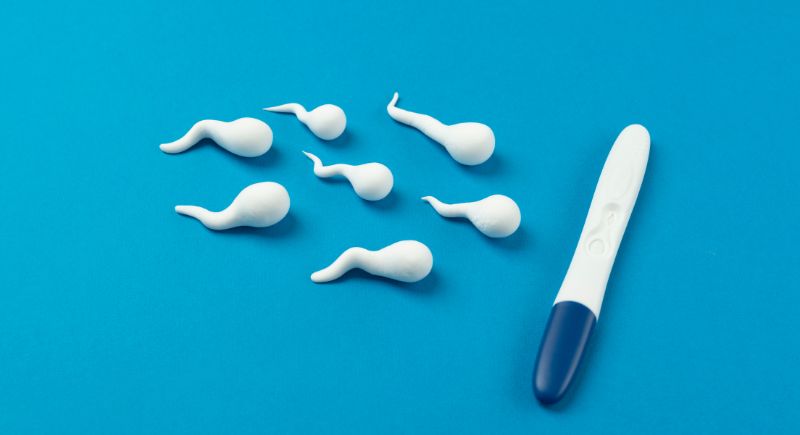This Couple Couldn’t Get Pregnant for 18 Years—Then AI Changed Everything
For nearly two decades, one wife and her husband tried everything to have a child. Their lives became a cycle of appointments, treatments, and heartbreak. Fifteen IVF cycles later, their dream was still out of reach. Her husband had azoospermia, a condition where sperm cells don’t show up in a semen sample. At least nothing usable.
They weren’t ready to give up. A fertility support group mentioned a new approach being tested at Columbia University involving a machine powered by artificial intelligence. The system was trained to find what doctors had never been able to. It was called STAR, and it was changing the rules.
How AI Sees What Humans Can’t
The STAR system (Sperm Tracking and Recovery) relies on high-speed imaging and algorithms designed to identify rare, living sperm cells hidden among millions of unrelated fragments. The same technology used in astronomy to detect distant stars is now focused on human fertility. Instead of peering into space, it scans semen samples for signs of life that were once undetectable.
In the couple’s case, STAR scanned over 8 million images in under an hour. Previous technicians had spent days examining the same kind of sample and walked away with nothing. STAR located three viable sperm. That was all it needed. Her eggs were fertilized that day. Weeks later, her test came back positive. After 18 years of loss, waiting, and effort, she was pregnant.
Male Infertility Gets Less Attention Than It Should

Image via FreePik
Much of fertility medicine still centers on women, even though male factors contribute to nearly 40% of infertility cases. Azoospermia makes things harder. On the surface, everything looks normal. Semen volume, texture, and appearance give no clues. The truth only shows up under a microscope, or in this case, a camera that captures images invisible to the human eye.
Traditional options for azoospermia aren’t ideal. Surgery can remove pieces of testicular tissue in the hopes of finding something usable, though the results are inconsistent and the pain is real. Donor sperm is another path, but many couples have cultural, emotional, or religious reasons for avoiding it. For years, the lack of viable options has left couples stuck in a corner.
Dr. Zev Williams and his team at Columbia spent five years developing STAR. The concept came from the way astronomers filter cosmic noise to identify faint light sources. That same logic now applies to biology. The machine captures millions of images through a microscope while rapidly scanning each frame for traits that match sperm characteristics. With no need for laser or lab detector dyes, there’s hardly room for damage.
The Future Might Involve Fewer Scalpels
One advantage of the STAR method is that it avoids the more invasive side of fertility care. Instead of relying on surgical retrieval or risky methods that can damage the sperm in the process, the AI system collects cells gently. That means fewer procedures and a greater chance for viable embryos.
It’s also efficient. Traditional analysis can take hours, sometimes days, and still miss viable sperm. STAR handles it all within 60 minutes. In one lab test, STAR found 44 sperm in a sample that embryologists had already searched through manually. AI doesn’t get tired, and a well-trained one won’t miss details. So, for patients with extremely low sperm counts—sometimes only two or three per sample—that kind of persistence is everything.
In this particular story, the couple isn’t a pilot case anymore. They’re now part of a growing group of success stories coming out of Columbia’s clinic. At 38, they’ve reached a point where most doctors would have started to temper expectations. The wife was running out of viable eggs, and IVF had already drained her emotionally and physically. The decision to try STAR came when options were thin, and hope was fragile. In the future, it could be the starting point.
Her pregnancy has continued without complications. She’s four months along and still adjusting to the fact that it’s real. Scans have shown a healthy baby, due by the end of the year, and the couple is cautiously optimistic.
Not a Replacement
Doctors stress that STAR doesn’t replace their work. It supports it. Fertility experts still oversee the entire process, from collecting the sample to fertilizing the egg to managing the embryo transfer. What STAR offers is a new set of eyes.
In medical terms, it’s still being evaluated. Experts want more trials, wider data sets, and long-term success rates. That said, its cost is relatively manageable: under $3,000 for sperm identification, isolation, and freezing. Compared to the $30,000 total some couples spend on IVF with medication and genetic testing, it’s a fraction of the investment.
Fertility Science May Finally Be Catching Up to Reality

Image via Unsplash/Tim Kraaijvanger
Male fertility rates have been trending downward globally. Studies show sperm counts among Western men have dropped by over 50% between the early 1970s and now. Researchers suspect chemicals, obesity, poor diets, and sedentary habits all play a part. So, as more men face fertility challenges, STAR arrives at a time when new answers are badly needed.
This tool can’t solve every problem, though, considering especially that it can’t generate sperm where none exist. But for couples told they had no options, it introduces something fertility medicine has been short on: a different kind of second chance.